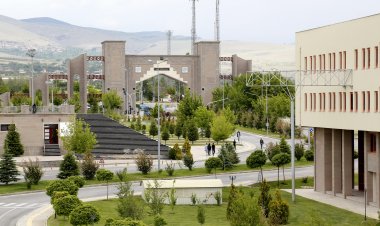UÇUCU KÜL VE MİKRO DANELİ ÇİMENTO KARIŞIMLARININ JET GROUT KOLONLARININ DAYANIMINA ETKİSİNİN İNCELENMESİ
UÇUCU KÜL VE MİKRO DANELİ ÇİMENTO KARIŞIMLARININ JET GROUT KOLONLARININ DAYANIMINA ETKİSİNİN İNCELENMESİ Battal, Hurşit; Demiröz, Atila Jet grout (JG) yöntemi geoteknik mühendisliğinde son yıllarda oldukça yaygın kullanılan bir zemin iyileştirme tekniğidir. Jet grout yöntemi kullanılarak diğer iyileştirme tekniklerinde olduğu gibi mevcut zeminin dayanım, geçirimlilik ve oturma gibi özellikleri iyileştirilmektedir. Yöntem genel anlamda bir delgi makinesine bağlı tijlerin iyileştirme yapılacak derinliğe indirilmesi, tijin ucundan yüksek basınçlı çimento groutu gönderilmesi ve belirli bir hızda tijin döndürülerek geri çekilmesi esasına dayanmaktadır. Çalışmada normal Portland çimentosu (NPÇ), mikro daneli çimento ve çimento ağırlığının %15’i oranında F tipi uçucu kül (F-UK) olup, bunların karışımlarından 4 farklı enjeksiyon harcı oluşturulmuştur. Normal Portland çimentosu kullanılarak su/çimento oranları 0.8, 1.0, 1.2 ve 1.4 olan enjeksiyon harçlarıyla jet grout kolonları oluşturulmuştur. Mikro daneli çimentolu enjeksiyon harçlarıyla su/çimento oranları 0.8, 1.0, 1.4, 1.8, 2.4 ve 3.0 olan jet grout kolonları oluşturulmuştur. Oluşturulan kolonlarda alınan karot numuneleri üzerinde serbest basınç dayanım deneyleri yapılmıştır. Oluşturulan 4 farklı grup jet grout kolonları içerisinde su/çimento oranı 0.8 olan kolonlarda en yüksek dayanımlar elde edilmiştir. Düşük su/çimento oranlı karışımlarda uçucu külün olumlu etkisi yeterli görülmemişken, su miktarının arttığı yüksek su/çimentolu oranlı karışımlarda uçucu külün etkisinin daha belirgin olduğu gözlemlenmiştir.; Jet grout (JG) method is a widely used ground improvement technique in geotechnical engineering in recent years. As with other improvement techniques using the jet grout method, the properties such as strength, permeability and settlement of the existing soil are improved. In general terms, the method is based on the principle of lowering the rods connected to a drilling machine to the depth to be treated, sending the high pressure cement grout from the end of the rod and pulling the rod back at a certain speed. In the study used materials were; normal Portland cement (NPC), micro fine cement and 15% of cement weight F-type fly ash (F-FA), and four different injection grouts were formed from the mixtures of these materials. Jet grout columns were formed by injection grouts with water / cement ratios of 0.8, 1.0, 1.2 and 1.4 using normal Portland cement. Jet grout columns with water / cement ratios of 0.8, 1.0, 1.4, 1.8, 2.4 and 3.0 were formed with micro fine cement injection grouts. Unconfined compression strength tests were performed on the core samples taken from the columns. The highest strength was obtained in the columns with 0.8% water / cement ratio in 4 different group jet grout columns. While the positive effect of the fly ash at low water / cement ratio was not found to be sufficient, it was observed that the effect of the fly ash was more prominent in the mixtures which have high water / cement ratio where the amount of water increased.

UÇUCU KÜL VE MİKRO DANELİ ÇİMENTO KARIŞIMLARININ JET GROUT KOLONLARININ DAYANIMINA ETKİSİNİN İNCELENMESİ Battal, Hurşit; Demiröz, Atila Jet grout (JG) yöntemi geoteknik mühendisliğinde son yıllarda oldukça yaygın kullanılan bir zemin iyileştirme tekniğidir. Jet grout yöntemi kullanılarak diğer iyileştirme tekniklerinde olduğu gibi mevcut zeminin dayanım, geçirimlilik ve oturma gibi özellikleri iyileştirilmektedir.
Yöntem genel anlamda bir delgi makinesine bağlı tijlerin iyileştirme yapılacak derinliğe indirilmesi, tijin ucundan yüksek basınçlı çimento groutu gönderilmesi ve belirli bir hızda tijin döndürülerek geri çekilmesi esasına dayanmaktadır. Çalışmada normal Portland çimentosu (NPÇ), mikro daneli çimento ve çimento ağırlığının %15’i oranında F tipi uçucu kül (F-UK) olup, bunların karışımlarından 4 farklı enjeksiyon harcı oluşturulmuştur. Normal Portland çimentosu kullanılarak su/çimento oranları 0.8, 1.0, 1.2 ve 1.4 olan enjeksiyon harçlarıyla jet grout kolonları oluşturulmuştur. Mikro daneli çimentolu enjeksiyon harçlarıyla su/çimento oranları 0.8, 1.0, 1.4, 1.8, 2.4 ve 3.0 olan jet grout kolonları oluşturulmuştur.
Oluşturulan kolonlarda alınan karot numuneleri üzerinde serbest basınç dayanım deneyleri yapılmıştır. Oluşturulan 4 farklı grup jet grout kolonları içerisinde su/çimento oranı 0.8 olan kolonlarda en yüksek dayanımlar elde edilmiştir. Düşük su/çimento oranlı karışımlarda uçucu külün olumlu etkisi yeterli görülmemişken, su miktarının arttığı yüksek su/çimentolu oranlı karışımlarda uçucu külün etkisinin daha belirgin olduğu gözlemlenmiştir.;
Jet grout (JG) method is a widely used ground improvement technique in geotechnical engineering in recent years. As with other improvement techniques using the jet grout method, the properties such as strength, permeability and settlement of the existing soil are improved. In general terms, the method is based on the principle of lowering the rods connected to a drilling machine to the depth to be treated, sending the high pressure cement grout from the end of the rod and pulling the rod back at a certain speed. In the study used materials were; normal Portland cement (NPC), micro fine cement and 15% of cement weight F-type fly ash (F-FA), and four different injection grouts were formed from the mixtures of these materials. Jet grout columns were formed by injection grouts with water / cement ratios of 0.8, 1.0, 1.2 and 1.4 using normal Portland cement. Jet grout columns with water / cement ratios of 0.8, 1.0, 1.4, 1.8, 2.4 and 3.0 were formed with micro fine cement injection grouts. Unconfined compression strength tests were performed on the core samples taken from the columns. The highest strength was obtained in the columns with 0.8% water / cement ratio in 4 different group jet grout columns. While the positive effect of the fly ash at low water / cement ratio was not found to be sufficient, it was observed that the effect of the fly ash was more prominent in the mixtures which have high water / cement ratio where the amount of water increased.

 Bilgi
Bilgi 















